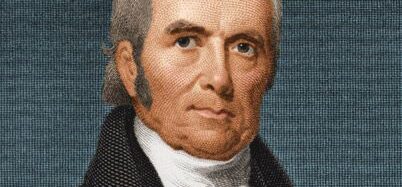This article first appeared in the July 12, 2024 University of San Diego’s The Originalism Blog.
The challenge over realized but undistributed corporate income in the Supreme Court case of Moore v. United States is said to be an opening skirmish on the constitutionality of a potential federal wealth tax. Proponents claim a wealth levy is within the constitutional category of “indirect taxes” and therefore not subject to apportionment among the states. Opponents counter that an exaction of that sort would be a direct tax, and therefore subject to apportionment.
This particular disagreement is the latest in a centuries’-long controversy over how the Constitution distinguishes direct from indirect taxes.
Unfortunately, opinions issued in Moore on June 20 only perpetuated the confusion. Justice Brett Kavanaugh’s opinion for the court contended that a direct tax is one imposed on persons or property, while an indirect levy is imposed on activities or transactions. Justice Ketanji Brown Jackson’s concurrence, following Justice Samuel Chase’s dictum in Hylton v. United States (1796), asserted that the Founders likely considered direct taxes to include only capitations and real property levies.
Both statements conflict sharply with comments about direct and indirect taxes made by participants in the 1787-90 constitutional debates. Those comments indicate that the founding generation well understood the direct-indirect distinction and that it did not necessarily follow the lines suggested by Justices Chase, Kavanaugh, Jackson, or (in NFIB v. Sebelius) by Chief Justice John Roberts.* These comments also indicate that the “direct tax” category was quite broad, and certainly not limited to capitations and property levies.
I reproduced some of these remarks in a 2015 Case Western Reserve Law Review article and again in an essay published on July 12, 2024 by the Volokh Conspiracy website.
My Volokh essay also provided links to even better evidence: actual 18th century direct tax statutes. They included laws adopted in 1713 by the British Parliament and during the 1770s and 1780s by the states of Massachusetts, Connecticut, New Hampshire, and South Carolina. The statutes amply confirm the ratification debate comments.
The statutes show that bases for direct taxes encompassed property and wealth of all varieties, businesses and other occupations, and income of all kinds. They further show that direct taxes could be imposed on activities and transactions as well as on persons and property.
Additionally, the statutes reveal that apportionment of direct taxation among political subdivisions was a longstanding custom, not a scheme cooked up in the Constitutional Convention to protect slavery, as sometimes suggested.
Finally, the statutes confirm that the Court’s much-abused ruling in Pollock v. Farmers’ Loan & Trust Company—that the income tax was direct—was spot on.
And now—exclusively for readers of The Originalism Blog!—I offer yet another Founding-era direct tax statute. This measure was adopted by the Pennsylvania legislature in 1781 to fund the expected war effort in 1782. Like other measures of its kind, it identified the items subject to tax and provided for them to be assessed and charged.
The link to the statute is here. I have highlighted the relevant portions.
The highlighted part on the first page (page 385 in Volume 10 of Pennsylvania Statutes at Large) introduces a scheme for apportioning the tax among political subdivisions. The next highlighted passage appears on the fifth page (page 389 in the original). It lists the items subject to the direct tax law. They include real estate, but also livestock and other property of many descriptions. They also include “all offices and posts of profit, and all professions, trades and occupations.”
The formal statement issued by the Anti-Federalist dissenters after the Pennsylvania ratifying convention thus summarized their own state’s direct tax law: They described the items subject to direct taxes as “land, cattle, trades, occupations, etc.”
The third highlighted passage on the sixth page (page 390 in the original volume) commissions local authorities to assess offices, professions, trades, and occupations by “having due regard to the profits arising from them.” This portion is essentially an income tax, although not in as straightforward a form as appears in some of the other direct tax statutes.
In view of these statutes, I don’t see how one can continue to assert that the Constitution classifies taxes on income and wealth as indirect. One possible quibble is to say the founding generation thought measures like these imposed and apportioned both kinds of tax. But I have never found any evidence for such an assertion.
Other than in a few ambiguous cases—such as the question in Hylton v. U.S. of whether an annual levy on a luxury item is a property tax (and thus direct) or an excise (and thus indirect)—it seems to me the controversy is resolved.
—-








